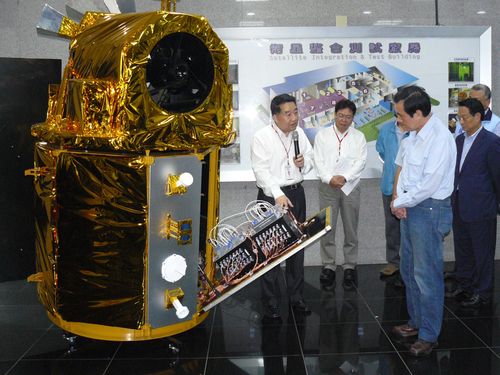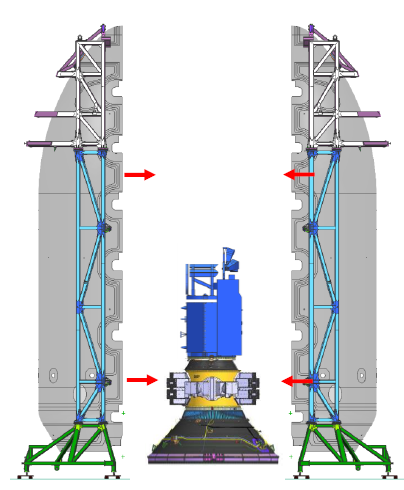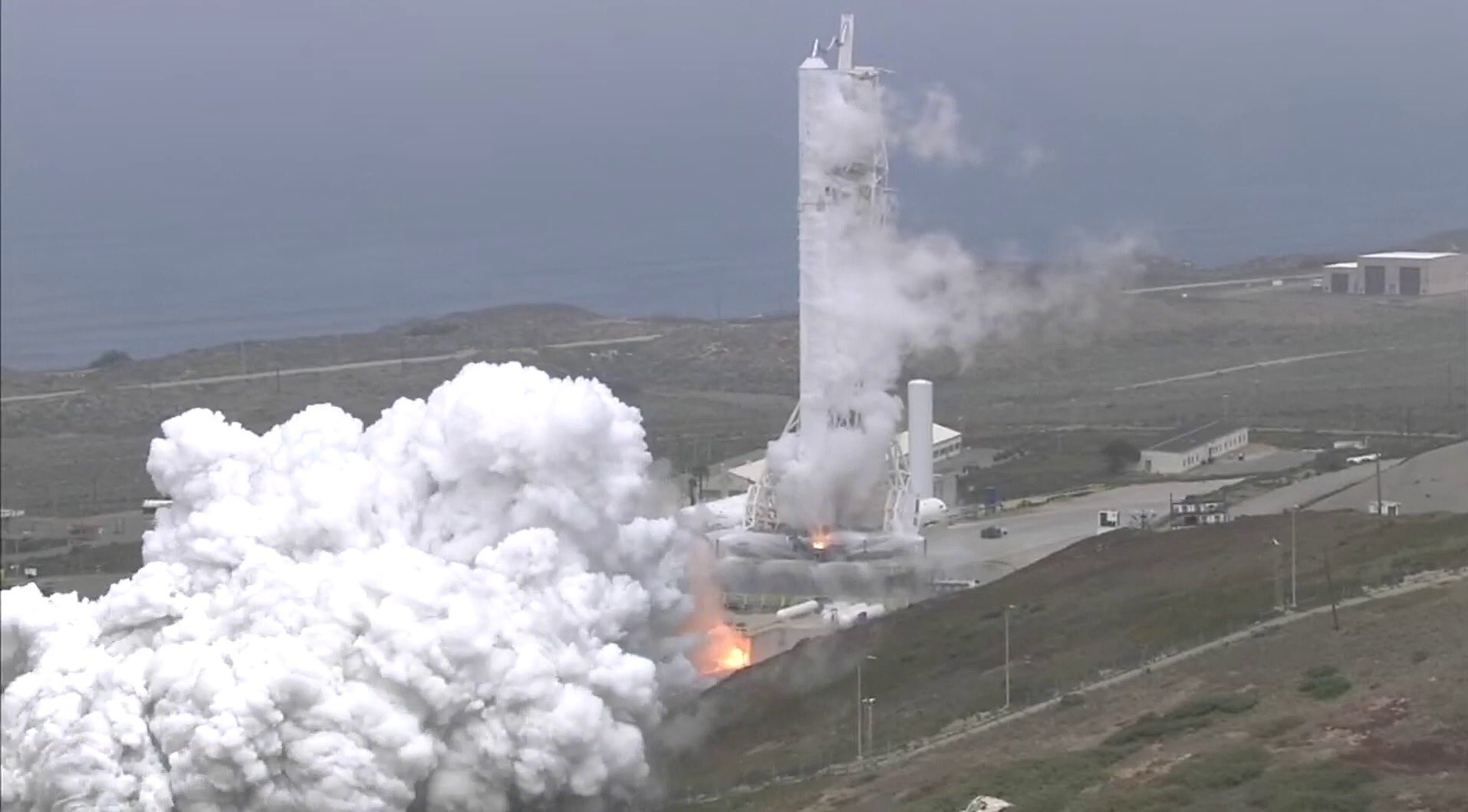
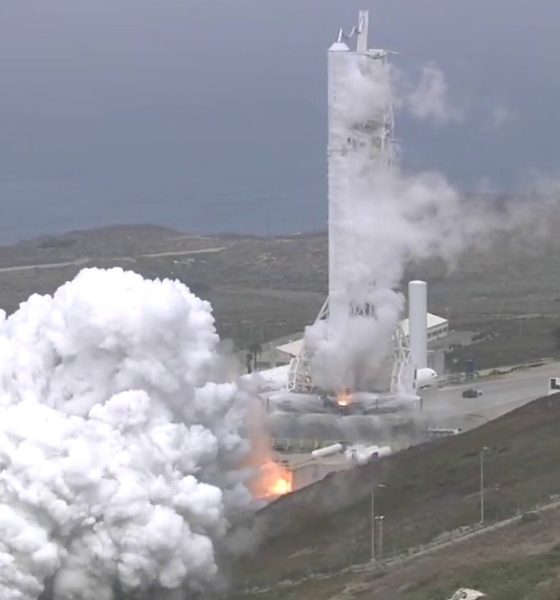
News
SpaceX’s twelfth launch and ninth recovery of 2017 ready for a Thursday liftoff
After conducting a successful static fire on Saturday, August 19, SpaceX is ready to undertake their 12th launch of 2017 and the 40th launch of Falcon 9.
The launch window begins Thursday, August 24, at 11:51 a.m. PST and lasts for approximately 40 minutes, allowing for flexibility in the event of a simple scrub or abort. It will see Falcon 9 carry Formosat-5 into a sun-synchronous orbit approximately 600-1000km above the surface of the Earth, where it will be able to best carry out its duties of remote sensing and Earth observation. Developed by Taiwan’s National Space Organization, the satellite will be the country’s first indigenous remote sensing platform in orbit.
- Formosat-5. (CNC)
- A diagram illustrating Formosat being encapsulated in Falcon 9’s payload fairing. (CNC)
Formosat-5 was originally contracted to launch aboard Falcon 1, SpaceX’s first orbital launch vehicle. Much smaller than Falcon 9, the original choice of launch vehicle made more sense given the satellite’s small mass of approximately 500 kilograms. After many years of delays, SpaceX had instead arranged for the satellite to be launched as a co-passenger alongside Spaceflight Industries’ first SHERPA launch, an orbital tug and dispenser that would have placed approximately 90 satellites of different sizes into unique orbits. However, after SpaceX experienced two catastrophic failures of Falcon 9 within a period of less than a year and a half, Spaceflight chose to rebook all of those passenger satellites on other launches. In spite of the apparent drama, Spaceflight and SpaceX still plan to work together in the future and SpaceX has several SHERPA launches scheduled over the next several years.
Given the size of Formosat-5 compared to Falcon 9, the satellite will be downright minuscule inside the vehicle’s cavernous payload fairing. While it has been reasonably argued that the dedication of an entire Falcon 9 for a 500 kg payload hints at a significant level of inefficiency in the launch industry, the small payload will allow Falcon 9 to attempt an unusually easy recovery on the ASDS Just Read The Instructions. The fifth West-coast mission for SpaceX, the Falcon 9 will lift off from Vandenberg Air Force Base, California before landing in the Pacific Ocean around ten minutes after launch. The choice to land in the ocean has sparked curiosity among fans after photos suggested that SpaceX’s West coast landing zone is complete and all necessary permits and environmental impact reviews have been successfully completed.
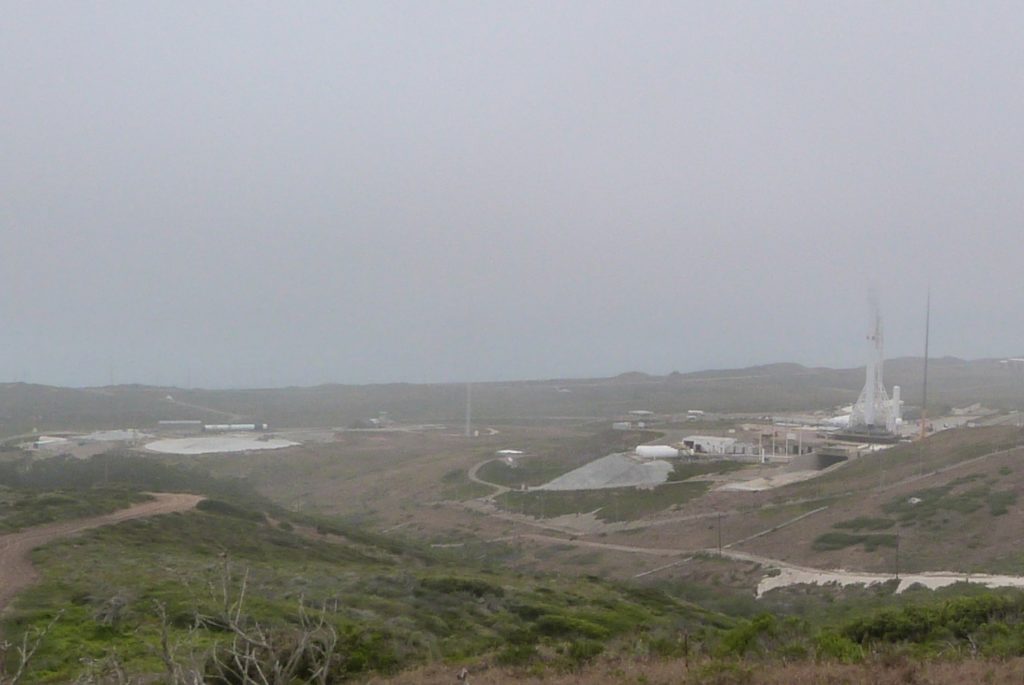
SpaceX’s VAFB Landing Zone can be seen in its near-complete state on the left. (NASASpaceflight/Chris Gebhardt)
SpaceX’s only other West-coast missions, seven contracted launches of Iridium’s NEXT constellation, are understood to be too heavy to provide the fuel margins necessary for Falcon 9 to return to the launch site for a landing. As such, the company’s West coast pad may well remain unused well into the future, and SpaceX may simply have chosen to focus their pad engineers on the far more pressing and time sensitive work going on at SpaceX’s East coast launch facilities.

News
Tesla aims to combat common Full Self-Driving problem with new patent
Tesla writes in the patent that its autonomous and semi-autonomous vehicles are heavily reliant on camera systems to navigate and interact with their environment.

Tesla is aiming to combat a common Full Self-Driving problem with a new patent.
One issue with Tesla’s vision-based approach is that sunlight glare can become a troublesome element of everyday travel. Full Self-Driving is certainly an amazing technology, but there are still things Tesla is aiming to figure out with its development.
Unfortunately, it is extremely difficult to get around this issue, and even humans need ways to combat it when they’re driving, as we commonly use sunglasses or sun visors to give us better visibility.
Cameras obviously do not have these ways to fight sunglare, but a new patent Tesla recently had published aims to fight this through a “glare shield.”
Tesla writes in the patent that its autonomous and semi-autonomous vehicles are heavily reliant on camera systems to navigate and interact with their environment.

The ability to see surroundings is crucial for accurate performance, and glare is one element of interference that has yet to be confronted.
Tesla described the patent, which will utilize “a textured surface composed of an array of micro-cones, or cone-shaped formations, which serve to scatter incident light in various directions, thereby reducing glare and improving camera vision.”

The patent was first spotted by Not a Tesla App.
The design of the micro-cones is the first element of the puzzle to fight the excess glare. The patent says they are “optimized in size, angle, and orientation to minimize Total Hemispherical Reflectance (THR) and reflection penalty, enhancing the camera’s ability to accurately interpret visual data.”
Additionally, there is an electromechanical system for dynamic orientation adjustment, which will allow the micro-cones to move based on the angle of external light sources.
This is not the only thing Tesla is mulling to resolve issues with sunlight glare, as it has also worked on two other ways to combat the problem. One thing the company has discussed is a direct photon count.
CEO Elon Musk said during the Q2 Earnings Call:
“We use an approach which is direct photon count. When you see a processed image, so the image that goes from the sort of photon counter — the silicon photon counter — that then goes through a digital signal processor or image signal processor, that’s normally what happens. And then the image that you see looks all washed out, because if you point the camera at the sun, the post-processing of the photon counting washes things out.”
Future Hardware iterations, like Hardware 5 and Hardware 6, could also integrate better solutions for the sunglare issue, such as neutral density filters or heated lenses, aiming to solve glare more effectively.
Elon Musk
Delaware Supreme Court reinstates Elon Musk’s 2018 Tesla CEO pay package
The unanimous decision criticized the prior total rescission as “improper and inequitable,” arguing that it left Musk uncompensated for six years of transformative leadership at Tesla.

The Delaware Supreme Court has overturned a lower court ruling, reinstating Elon Musk’s 2018 compensation package originally valued at $56 billion but now worth approximately $139 billion due to Tesla’s soaring stock price.
The unanimous decision criticized the prior total rescission as “improper and inequitable,” arguing that it left Musk uncompensated for six years of transformative leadership at Tesla. Musk quickly celebrated the outcome on X, stating that he felt “vindicated.” He also shared his gratitude to TSLA shareholders.
Delaware Supreme Court makes a decision
In a 49-page ruling Friday, the Delaware Supreme Court reversed Chancellor Kathaleen McCormick’s 2024 decision that voided the 2018 package over alleged board conflicts and inadequate shareholder disclosures. The high court acknowledged varying views on liability but agreed rescission was excessive, stating it “leaves Musk uncompensated for his time and efforts over a period of six years.”
The 2018 plan granted Musk options on about 304 million shares upon hitting aggressive milestones, all of which were achieved ahead of time. Shareholders overwhelmingly approved it initially in 2018 and ratified it once again in 2024 after the Delaware lower court struck it down. The case against Musk’s 2018 pay package was filed by plaintiff Richard Tornetta, who held just nine shares when the compensation plan was approved.
A hard-fought victory
As noted in a Reuters report, Tesla’s win avoids a potential $26 billion earnings hit from replacing the award at current prices. Tesla, now Texas-incorporated, had hedged with interim plans, including a November 2025 shareholder-approved package potentially worth $878 billion tied to Robotaxi and Optimus goals and other extremely aggressive operational milestones.
The saga surrounding Elon Musk’s 2018 pay package ultimately damaged Delaware’s corporate appeal, prompting a number of high-profile firms, such as Dropbox, Roblox, Trade Desk, and Coinbase, to follow Tesla’s exodus out of the state. What added more fuel to the issue was the fact that Tornetta’s legal team, following the lower court’s 2024 decision, demanded a fee request of more than $5.1 billion worth of TSLA stock, which was equal to an hourly rate of over $200,000.
Delaware Supreme Court Elon Musk 2018 Pay Package by Simon Alvarez
News
Tesla Cybercab tests are going on overdrive with production-ready units
Tesla is ramping its real-world tests of the Cybercab, with multiple sightings of the vehicle being reported across social media this week.

Tesla is ramping its real-world tests of the Cybercab, with multiple sightings of the autonomous two-seater being reported across social media this week. Based on videos of the vehicle that have been shared online, it appears that Cybercab tests are underway across multiple states.
Recent Cybercab sightings
Reports of Cybercab tests have ramped this week, with a vehicle that looked like a production-ready prototype being spotted at Apple’s Visitor Center in California. The vehicle in this sighting was interesting as it was equipped with a steering wheel. The vehicle also featured some changes to the design of its brake lights.
The Cybercab was also filmed testing at the Fremont factory’s test track, which also seemed to involve a vehicle that looked production-ready. This also seemed to be the case for a Cybercab that was spotted in Austin, Texas, which happened to be undergoing real-world tests. Overall, these sightings suggest that Cybercab testing is fully underway, and the vehicle is really moving towards production.
Production design all but finalized?
Recently, a near-production-ready Cybercab was showcased at Tesla’s Santana Row showroom in San Jose. The vehicle was equipped with frameless windows, dual windshield wipers, powered butterfly door struts, an extended front splitter, an updated lightbar, new wheel covers, and a license plate bracket. Interior updates include redesigned dash/door panels, refined seats with center cupholders, updated carpet, and what appeared to be improved legroom.
There seems to be a pretty good chance that the Cybercab’s design has been all but finalized, at least considering Elon Musk’s comments at the 2025 Annual Shareholder Meeting. During the event, Musk confirmed that the vehicle will enter production around April 2026, and its production targets will be quite ambitious.
